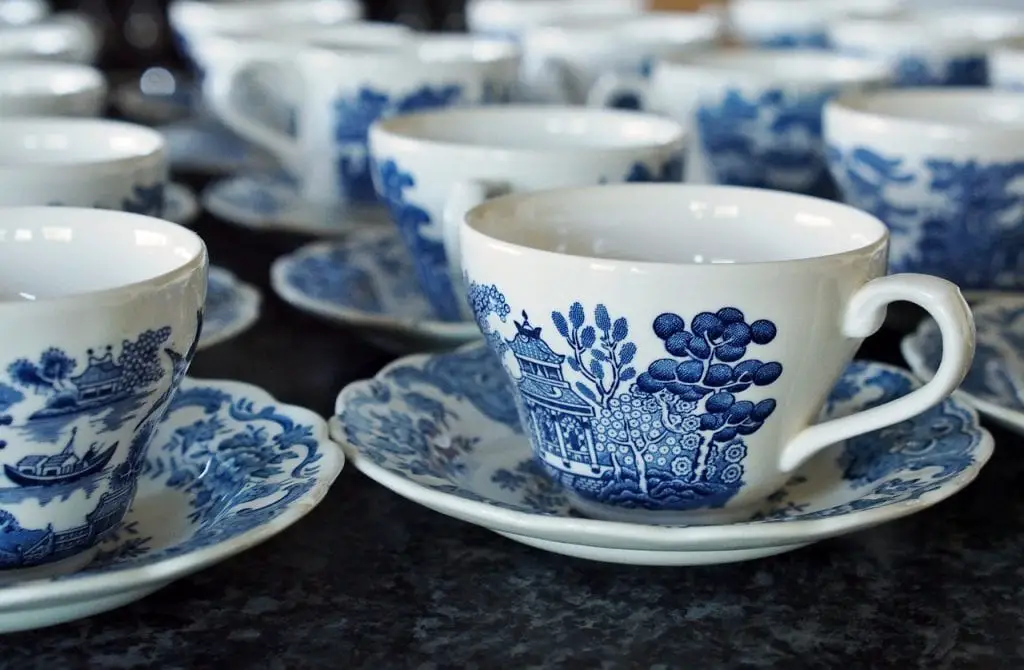Ever wondered if the sky is truly blue? Of course, you have! It’s the age-old question that has boggled many minds for centuries. Here’s the thing. It’s not as simple as whether the sky is blue or not. We are going to have to dive deep into history to understand the origin of the color blue. You will be surprised to know the color blue has a very fascinating past.
Today we see blue all around us – primarily in the vast sky above us and the oceans. It’s quite easy for someone in the 21st century to perceive the color blue. History, on the other hand, tells us that the color blue didn’t even exist in ancient times! Can you even imagine that? Well, let’s look at how this magnificent color, with an enriching past, became popular.
Evolution and The Color Blue
Many scientists believe that ancient man was colorblind. According to ophthalmologist Hugo Magnus, it was only after decades of exposure to various colors around us that we developed sensitivity to them. Over time, the man was able to detect and perceive an increasing number of colors.
If we take a more blatant look at the role of evolution, we find that man was able to perceive only a few colors (white, black, red, yellow, and green). White and black symbolized the distinction between night and day or light and dark. Red was important because it was crucial to be able to detect blood as a sign of danger because it directly affected man’s survival. Yellow and green on the other hand, were prominent colors in the natural setting. The flowers, fruits, and leaves found in nature were important for survival too. As you can see, it was not important for early man to be able to detect the color blue, simply because it wasn’t really a significant part of nature.
With the growth of knowledge and technology over recent years, humans have been able to develop varieties of flowers that are blue or close to it. However, if we look at prehistoric times, nothing was blue in nature. Yes, there was the sky, but it is unlikely that ancient man even noticed the color of it. Colours were just not that important when it came to human experiences back then.
A fairly recent experiment conducted on the people of the Himba tribe has compelling evidence to support these evolutionary theories. The language of the tribe had no word to describe the color blue or to distinguish between blue and green. Researcher Jules Davidoff traveled to Namibia to carry out an investigation to see if this was true. The members of the tribe were shown 11 squares with different shades of green, including 1 blue square. Results showed that they couldn’t differentiate between blue and green.
This experiment shows us the crucial role that evolution and language play in developing sensitivity to color. It is very likely that the color blue always existed but no one really noticed it. Or maybe they didn’t consider it significant enough to give it its own name.
Now, as time passed, colors became a more prominent part of history. Colors were mentioned in ancient texts and were used to decorate prehistoric artifacts and paintings. There is enough evidence to suggest that ancient man was able to detect color. So how come there was no sign of the color blue? Let’s keep digging.
The Role of Language and Perception
Language plays a crucial role in the way we perceive things. It is possible that because of the lack of a descriptive term for the color blue, there was no room for our brains to perceive it. This doesn’t mean that it didn’t exist, but because there was no importance given to it, it was close to non-existent.
A deep analysis of historical texts shows us that blue appeared as a much later addition in all languages. The colors white, black, red, yellow, and green were prominently used in art and literature across cultures. Could it be that blue was simply seen as a hue of black? We’re talking about a much simpler time so this could be a very real possibility.
It seems as though the color blue was not that different from white and/or black. Think about it – a bright sunny day could have been perceived as white skies, whereas a stormy one could be looked at as black.
Blue in Ancient Literature
Historians gather that the word ‘blue’ did not exist in ancient Greek times. In fact, studies show that it has never been mentioned in ancient Greek texts. Even if you go through religious books like the Bible or the Mahabharata, there is no trace of the color blue. The sea is described as many things but blue.
I’m sure we’ve all heard of Homer’s mention of the “wine-red sea” in his work, Odyssey. What was he talking about? Aren’t the oceans that we see around the world all blue?
William Gladstone’s detailed look at Homer’s work goes on to state that he had the most bizarre descriptions of various colors. Homer describes sheep wool and ox skin as purple, horses and lions as red, and honey as green. Strange, right?
The Invention of a Marketable Blue
It was only much later in history that the color blue came to become a significant color, adored by artists from all over the world. It eventually led to the global trade of many blue objects.
We already know the Egyptians were responsible for many glorious inventions. Guess what? They invented the color blue too! It was easy to create the existing colors but blue was quite a challenge for these early inventors.
Around 2,200 B.C., ancient Egyptians combined sand and limestone along with other copper-containing minerals like malachite and azurite to create a mixture. These substances were heated to about 1470 – 1650 °F (ca. 899 °C) to make the first-ever marketable blue. The term blue was coined by the Egyptians after succeeding with their creation. This invention sparked the creation of many blue objects that were adored by all.

Blue Objects Over Time
The earliest traces of blue objects were mostly decorative in nature. The invention of a marketable blue by the Egyptians soon passed on to the Persians, Moroccans, and even the Roman Empire. These artifacts were rare and for several centuries only royalty could afford them.
After gaining much popularity, many artists who coveted this precious hue began using it in their paintings. The earliest type of blue used in paintings was known as ‘ultramarine blue.’ The color was expensive and rare but highly in demand. Artists all over their world tried to get their hands on it. It is believed that one artist led his family into debt after purchasing the color for his art!
The creation of blue stones used in jewelry was another highlight in the evolution of the marketable color blue. Old paintings show us that kings and queens across the world wore blue stones and other blue jewelry. It’s funny because if we were to wear a shiny blue sapphire today, there’s a part of us that will probably feel like royalty. And now we know why.
Many centuries later, the use of the color blue became more common. China went on to use blue to make different objects out of porcelain. The Chinese artisans from back then created white and blue objects made of porcelain that are in demand even today. They made plates, cups, wall pieces, and other similar decorative pieces with intricate artwork on its surface.
In later years, people eventually discovered that it was much cheaper to use blue as a dye for textiles. Soon began the mass production of clothes, carpets, and so much more. By the 16th century, the color blue was worn by people of all social classes. It was no longer something only royalty could afford.
The 17th century marked an important year for blue objects. It was the year when blue jeans were invented in Genoa, Italy. Something that gained popularity all over the world years ago continues to be a trend even in the 21st century.
Today, blue is all around us. Not only in the sky above us but in almost everything that we use. Be it fashion, dining, art, or textiles, the color blue is now accessible to everyone.
However, it is important to keep in mind the beauty and extravagance of this color. If you look at old paintings of the Virgin Mary, she is always clothed in blue as a symbol of divinity and purity. Remember the beautiful necklace in the movie Titanic? That was blue too! All this and more shows us that blue isn’t just a color.
I’m sure the next time you look at something blue, you’ll have a lot more appreciation for the fascinating history it has.




